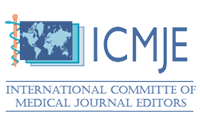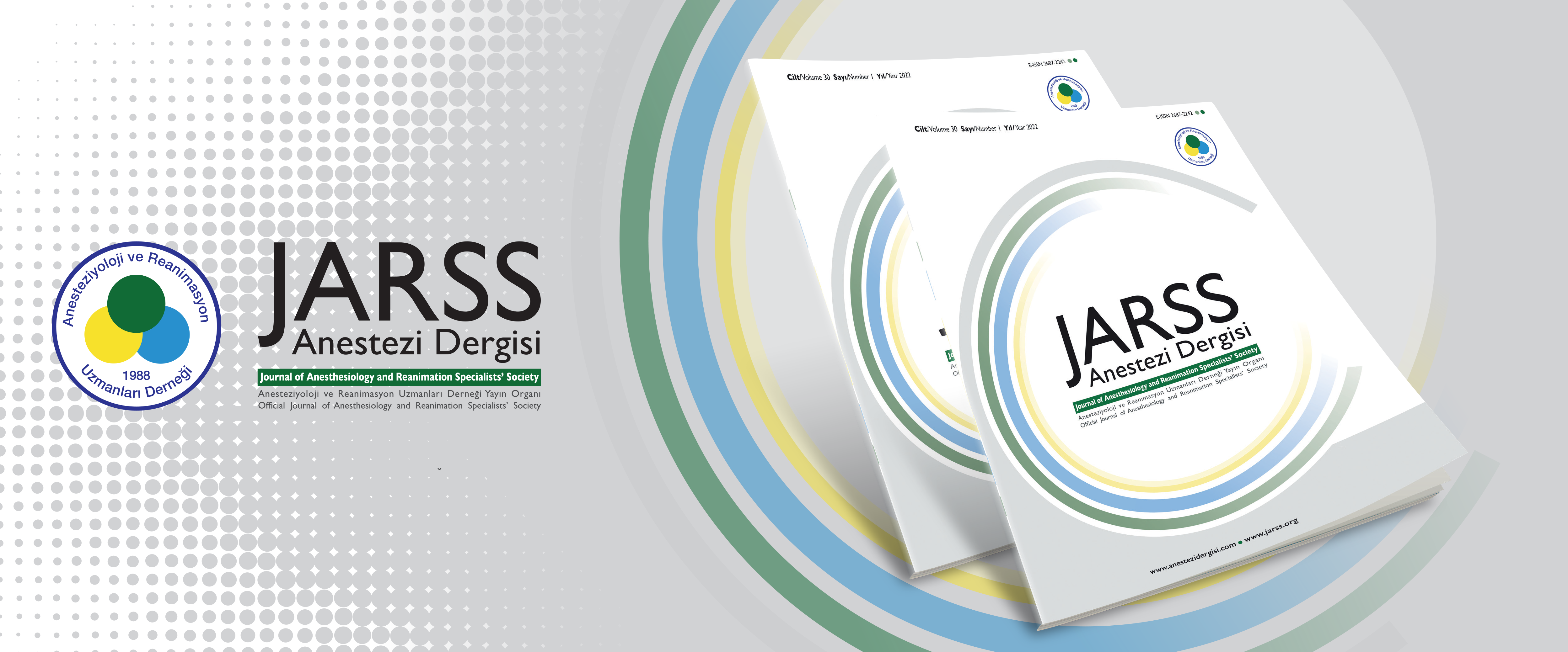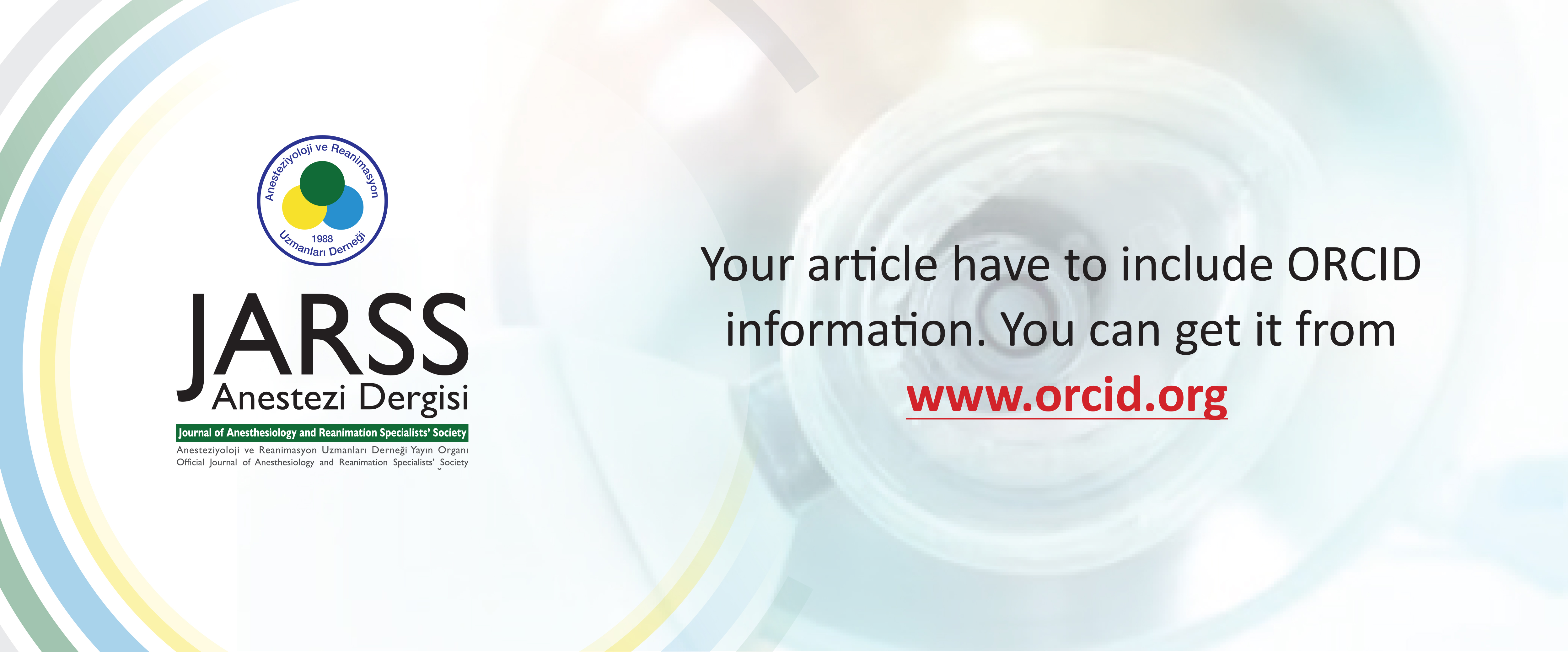Effects of Driving Pressure–Guided Ventilation During Robot-Assisted Laparoscopic Surgery in Steep Trendelenburg Position
Ezgi Uysal1, Seval Izdes2, Burak Nalbant21Hitit University, Corum Erol Olcok Training and Research Hospital, Department of Anesthesiology and Reanimation, Corum, Türkiye2Ankara Yildirim Beyazit University, Faculty of Medicine, Department of Anesthesiology and Reanimation, Ankara, Türkiye
Objective: This study aimed to evaluate the effects of driving pressure (DP)-guided personalized positive end-expiratory pressure (PEEP) ventilation compared to fixed PEEP ventilation on intraoperative respiratory mechanics, hemodynamic stability, and postoperative pulmonary function in patients undergoing robot-assisted laparoscopic surgery (RALS) in the steep Trendelenburg position.
Method: A total of 76 patients scheduled for RALS were prospectively randomized into two groups: Group S received personalized PEEP based on the lowest DP, while Group C received a fixed PEEP of 4 cmH₂O. Lung ultrasound (LUS) was utilized perioperatively to assess the degree of atelectasis. Intraoperative respiratory and hemodynamic parameters, as well as postoperative oxygenation and pulmonary complications, were evaluated and compared between groups.
Results: Seventy patients completed the study. Demographic characteristics were similar between the two groups. Group S exhibited significantly longer durations of anesthesia and pneumoperitoneum. Although intraoperative plateau pressure and peak inspiratory pressure were higher in Group S at specific time points, these values remained within safe limits. Postoperative oxygenation parameters, including peripheral oxygen saturation and arterial oxygen pressure, were significantly improved in Group S. Additionally, both intraoperative and postoperative LUS scores were significantly lower in Group S, indicating reduced pulmonary atelectasis. While the incidence of postoperative pulmonary complications was numerically lower in Group S (25.7%) compared to Group C (34.3%), this difference did not reach statistical significance. Hemodynamic stability was maintained in both groups throughout the perioperative period without the need for vasopressor support.
Conclusion: The DP-guided personalized PEEP ventilation improves postoperative oxygenation and lung aeration in patients undergoing RALS in the steep Trendelenburg position without adversely affecting intraoperative hemodynamic stability. Although the reduction in pulmonary complications did not reach statistical significance, the findings support the clinical safety and potential benefits of individualized ventilation strategies in this surgical setting.
Keywords: Robotic surgery, driving pressure, positive end expiratory pressure, lung ultrasound, mechanical ventilation
Dik Trendelenburg Pozisyonunda Yapılan Robot Yardımlı Laparoskopik Cerrahi Sırasında Sürüş Basıncı Rehberli Ventilasyonun Etkileri
Ezgi Uysal1, Seval Izdes2, Burak Nalbant21Hitit Üniversitesi, Çorum Erol Olçak Eğitim ve Araştırma Hastanesi, Anesteziyoloji ve Reanimasyon Kliniği, Çorum, Türkiye2Ankara Yıldırım Beyazıt Üniversitesi, Tıp Fakültesi, Anesteziyoloji ve Reanimasyon Ana Bilim Dalı, Ankara, Türkiye
Amaç: Bu çalışmada, dik Trendelenburg pozisyonunda robot yardımlı laparoskopik cerrahi (RYLC) geçiren hastalarda, en düşük sürüş basıncına (DP) göre kişiselleştirilmiş pozitif ekspiratuvar son basınç (PEEP) ventilasyonu ile sabit PEEP uygulamasının intraoperatif solunumsal mekanikler, hemodinamik stabilite ve postoperatif pulmoner fonksiyonlar üzerindeki etkilerini karşılaştırmayı amaçladık.
Yöntem: Robot yardımlı laparoskopik cerrahi planlanan 76 hasta prospektif olarak iki gruba randomize edildi. Grup S, en düşük DP değerine göre belirlenen kişiselleştirilmiş PEEP ile ventile edilirken; Grup C’ye sabit 4 cmH₂O PEEP uygulandı. Perioperatif dönemde atelektazi, akciğer ultrasonografisi (ACUS) ile değerlendirildi. İntraoperatif solunumsal ve hemodinamik parametreler ile postoperatif oksijenasyon değerleri ve pulmoner komplikasyonlar karşılaştırıldı.
Bulgular: Yetmiş hasta çalışmayı tamamladı. Demografik özellikler gruplar arasında benzerdi. Grup S’de anestezi ve pnömoperitoneum süreleri anlamlı olarak daha uzundu. İntraoperatif plato ve pik inspiratuar basınçlar bazı zaman noktalarında Grup S’de daha yüksek izlendi; ancak bu değerler güvenli sınırların altında kaldı. Postoperatif periferik oksijen satürasyonu ve arteriyel oksijen basıncı düzeyleri Grup S’de anlamlı olarak daha yüksekti. Ayrıca, intraoperatif ve postoperatif ACUS skorları Grup S’de belirgin şekilde daha düşüktü, bu da daha az atelektazi ile ilişkilendirildi. Postoperatif pulmoner komplikasyonlar Grup S’de daha düşük oranda gözlense de (%25,7’ye karşı %34,3), bu fark istatistiksel olarak anlamlı değildi. Her iki grupta da perioperatif dönemde hemodinamik stabilite korunmuş, vazopresör ihtiyacı olmamıştır.
Sonuç: Dik Trendelenburg pozisyonunda gerçekleştirilen RYLC sırasında DP rehberli kişiselleştirilmiş PEEP uygulaması, intraoperatif hemodinamik stabiliteyi bozmadan postoperatif oksijenasyonu ve akciğer havalanmasını iyileştirmektedir. Pulmoner komplikasyonlarda istatistiksel anlamlı azalma gözlenmemekle birlikte, bu strateji güvenli ve potansiyel olarak faydalı görünmektedir.
Anahtar Kelimeler: Robotik cerrahi, sürüş basıncı, ekspiryum sonu pozitif basınç, akciğer ultrasonografisi, mekanik ventilasyon
Manuscript Language: English
(352 downloaded)
















